Over the course of this week, as a class we have completed a variety of water quality test. Our study sites were a section of the Coquitlam River, that runs beside gates park and the oxbow pond behind the school. We did a variety of water quality tests and identified the invertebrate found in these bodies of water.
According to our water quality testes, the river has a higher approximate water quality index, at 89.76 there for is healthier and less polluted than the pond. The water quality index goes from 1 to 100. The higher the number, the healthier the water. Even before we began our studies, the river was evidently cleaner. It smelled better too. The oxbow pond’s approximate water quality index was 74.14. in order to determine the approximate water quality index of both study sites, we measured the air temperature, water temperature, Dissolved Oxygen, pH, Nitrates, Phosphates, Turbidity and Total Dissolved Salts, as seen on the tables below.
| Coquitlam River | |||||
| Test | Results | Units | Q-Value | Weighting Factor | Weighted Q-Value |
| Dissolved Oxygen | 92 | % Saturation | 95 | 0.23 | 21.85 |
| pH | 6 | pH units | 88 | 0.15 | 13.2 |
| Temperature Change | 3o | oC | 80 | 0.14 | 11.2 |
| Nitrates | 0 | mg/L NO4 | 98 | 0.14 | 13.72 |
| Phosphates | 0.4 | mg/L PO4 | 76 | 0.14 | 1.64 |
| Turbidity | 2 | NTU | 95 | 0.11 | 10.45 |
| Total Dissolved Salts | 50 | mg/L | 87 | 0.10 | 8.7 |
| Approximate Water Quality Index: 89.76 | |||||
| Oxbow Pond | |||||
| Test | Results | Units | Q-Value | Weighting Factor | Weighted Q-Value |
| Dissolved Oxygen | 90 | % Saturation | 92 | 0.23 | 21.16 |
| pH | 5 | pH units | 54 | 0.15 | 8.1 |
| Temperature Change | 2o | oC | 85 | 0.14 | 11.9 |
| Nitrates | 0 | mg/L NO4 | 98 | 0.14 | 13.72 |
| Phosphates | 5 | mg/L PO4 | 14 | 0.14 | 1.96 |
| Turbidity | 8 | NTU | 80 | 0.11 | 8.8 |
| Total Dissolved Salts | 100 | mg/L | 85 | 0.10 | 8.5 |
| Approximate Water Quality Index: 74.14 | |||||
From our aquatic invertebrate studies, we can assume that the Coquitlam River is cleaner, as there are pollution sensit
ive organisms as well as pollution tolerant organisms. Although there is a wide range of pollution tolerance within organisms we found, many of the organisms were pollution tolerant therefore must live in a healthy ecosystem. The pond, however, had only somewhat pollution tolerant and pollution tolerant organism, therefore is more polluted.
| Coquitlam River Diversity:
|
||
| Invertebrates | Quantity | Pollution Tolerance |
| Caddisfly Larva-
|
1 | Pollution Sensitive |
| Mayfly Larva | 16 | Pollution Sensitive |
| Pond Snail | 2 | Pollution Tolerant |
| Watermite | 1 | Pollution Tolerant |
| Stonefly | 2 | Pollution Sensitive |
| Cranefly Larva | 1 | Somewhat Pollution Tolerant |
| Dragonfly Nymph | 2 | Somewhat Pollution Tolerant |
| Oxbow Pond Diversity:
|
||
| Invertebrates | Quantity | Pollution Tolerance |
| Aquatic sow bug
|
3 | Somewhat Pollution Tolerant |
| Alderfly Larva | 1 | Somewhat Pollution Tolerant |
| Dragonfly Nymph (sub-order) | 5 | Somewhat Pollution Tolerant |
| Watermite | 1 | Pollution Tolerant |
| Dragonfly Nymph | 3 | Somewhat Pollution Tolerant |
| Fish* | 5 | – |
| Spider* | 3 | – |
*Does not qualify as an aquatic invertebrate, therefore is not counted for studies.
The water quality is related to the diversity and number of invertebrates found in a water way because although most invertebrates prefer clean healthy
water, some have more pollution tolerance than others. The lower the water quality index, the harder it is for invertebrates to live there. For example, in a geyser, there will not be many invertebrates. Maybe some lichen and bacteria, but not much else. In the Coquitlam River however, there will be a wider variety of invertebrates, as the temperature is cooler. Same goes for dissolved oxygen, nitrates and all the other aspects of the water quality test.
Reflection: I loved these activities because it was hands on and engaging. We got to see for ourselves the conditions of both the river and pond. Also, it was simply fun. I learned a lot about the various types of aquatic invertebrates as well as why things like dissolved oxygen and pH matter. It was cool to learn how to test for the water quality and learn about the various conditions that impact it, aside from the obvious human pollution. For me, these activities could not have been more meaningful. Being out side and literally knee deep in our studies really helped my understanding. I thought this was one of the most interesting science units, because of our hands-on experience.
Images:
1-Fish found in the Oxbow Pond
2-Heading down to the Oxbow Pond to find critters
3-Alderfly larva found in the Oxbow Pond
4-Dragonfly Nymph (subspecies) found in the Oxbow Pond
5-Aquatic sow bug and fish found in the Oxbow Pond
6-Mayfly larva found in the Coquitlam River
7-Exploring the Coquitlam River
8-Stonefly larva found in the Coquitlam River
9-Caddisfly and Mayfly larva found in the Coquitlam River
10-Snail and Mayfly larva found in the Coquitlam River










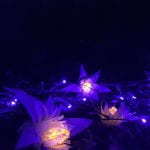

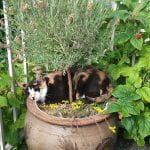























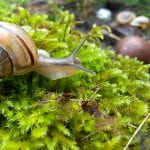

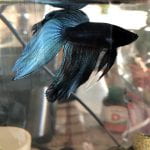
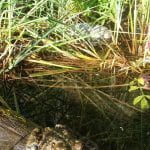











Leave a Reply